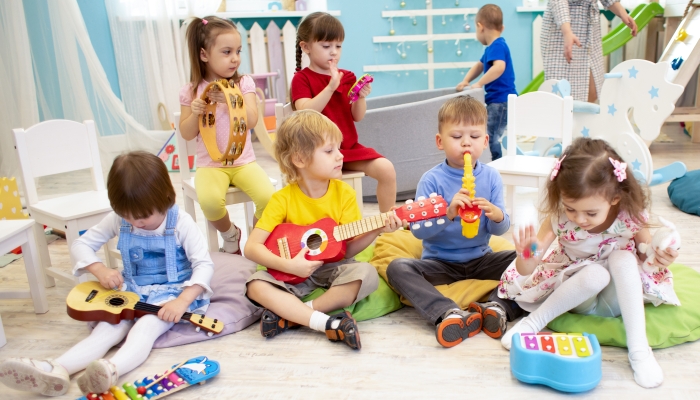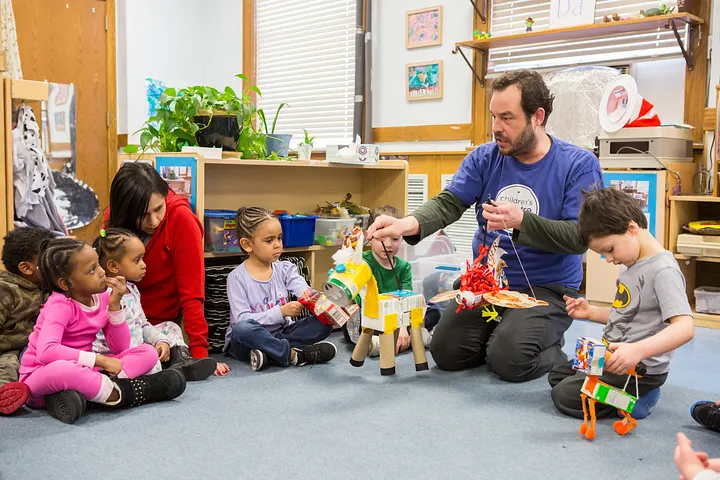More Than Just Toys: The Power of Play-Based Education
A look at materials used and how they compare to other learning methods
Play-based learning is a child- centred approach that uses play as the primary method for learning. It encourages exploration, creativity, and hands-on experiences. This blog will explore the types of materials and equipment commonly used in play-based settings and how this approach compares to other learning methods such as Montessori, Reggio Emilia, and Traditional.
Materials and Equipment Used in Play-Based Learning
One of the key features of play-based learning is the use of a wide variety of hands-on materials that stimulate curiosity and creativity. Here are the main categories of tools and materials often found in play-based classrooms:
🎨 Art & Craft Supplies
Example: Crayons, Markers, Paint, Scissors, Glue, Coloured Paper, Playdough
Skills Developed: Creativity, Fine Motor Skills, Self-Expression
🧱Construction and Building Toys
Example: LEGO, Wooden Blocks, Magnetic Tiles, Large Foam Blocks
Skills Developed: Spatial Awareness, Logic, Coordination
🎭 Dramatic and Pretend Play Materials
Example: Toy Kitchen, Doctor Kits, Dress-up Clothes, Dolls, Puppets
Skills Developed: Social skills, Imagination, Language
📚Literacy and Language Resources
Example: Storybooks, Alphabet cards, Magnetic Letters, Storytelling PropsSkills Developed: Letter recognition & phonics, Vocabulary building, Listening & comprehension, Storytelling & speaking confidence, Print awareness
Example: Counting Rods, Puzzles, Number Blocks, Sorting Trays
Skills Developed: Number recognition, Counting & one-to-one correspondence, Early addition & subtraction, Measuring and comparing quantities
 🎵Music and Movement
🎵Music and Movement

Example: Musical Instruments, Rhythm Sticks, Dance songs
Skills Developed: Rhythm and auditory memory, Listening skills, Gross motor coordination, Emotional expression through sound
🆚 How Play-Based Learning Compares with Other Approaches
|
Approach |
Focus |
Materials
Used |
Teacher’s
Role |
Reference |
|
Play-Based |
Child-led exploration, creativity, holistic development |
Blocks, picture books, art tools, musical instruments,
outdoor toys |
Facilitator, co-player, observer |
|
|
Montessori |
Independence, real-life skills, structure & self-discipline |
Self-correcting tools, practical life materials, sensorial
items |
Guide, structured observer |
|
|
Reggio Emilia |
Creative expression, collaboration, project-based learning |
Natural/recycled materials, expressive arts, documentation
tools |
Co-learner, documenter |
|
|
Traditional |
Academic instruction, memorization, outcomes-based |
Textbooks, worksheets, flashcards |
Instructor, evaluator |
“Children learn as they play. Most importantly, in play children learn how to learn.”
— O. Fred Donaldson
— O. Fred Donaldson
References
Bodrova, E., & Leong, D. J. (2012, April). Tools of the Mind : Vygotskian approach to early childhood education / E. Bodrova, D.J. Leong. ResearchGate. https://www.researchgate.net/publication/31663781_Tools_of_the_Mind_Vygotskian_approach_to_early_childhood_education_E_Bodrova_DJ_Leong
Edwards, C., Gandini, L., & Forman, G. (2024). The Hundred Languages of Children: The Reggio Emilia Experience in Transformation, 3rd Edition. Google Books. https://books.google.com.my/books/about/The_Hundred_Languages_of_Children_The_Re.html?id=LEgm-z5fos4C&redir_esc=y
Hirsh-Pasek, K., Michnick Golinkoff, R., Berk, L. E., & Singer, D. (2008). A Mandate for Playful Learning in Preschool. Oxford Academic. https://doi.org/10.1093/acprof:oso/9780195382716.001.0001
Lillard, A. (2005). Montessori: The Science Behind the Genius. https://montessorischoolalmeria.es/wp-content/uploads/2021/05/montessori-science-behind-genius.pdf
Wood, E. (2023, September 27). Play, Learning and the Early Childhood Curriculum. SAGE Publications Ltd. https://uk.sagepub.com/en-gb/eur/play-learning-and-the-early-childhood-curriculum/book234110
Hirsh-Pasek, K., Michnick Golinkoff, R., Berk, L. E., & Singer, D. (2008). A Mandate for Playful Learning in Preschool. Oxford Academic. https://doi.org/10.1093/acprof:oso/9780195382716.001.0001
Lillard, A. (2005). Montessori: The Science Behind the Genius. https://montessorischoolalmeria.es/wp-content/uploads/2021/05/montessori-science-behind-genius.pdf
Wood, E. (2023, September 27). Play, Learning and the Early Childhood Curriculum. SAGE Publications Ltd. https://uk.sagepub.com/en-gb/eur/play-learning-and-the-early-childhood-curriculum/book234110







Comments
Post a Comment